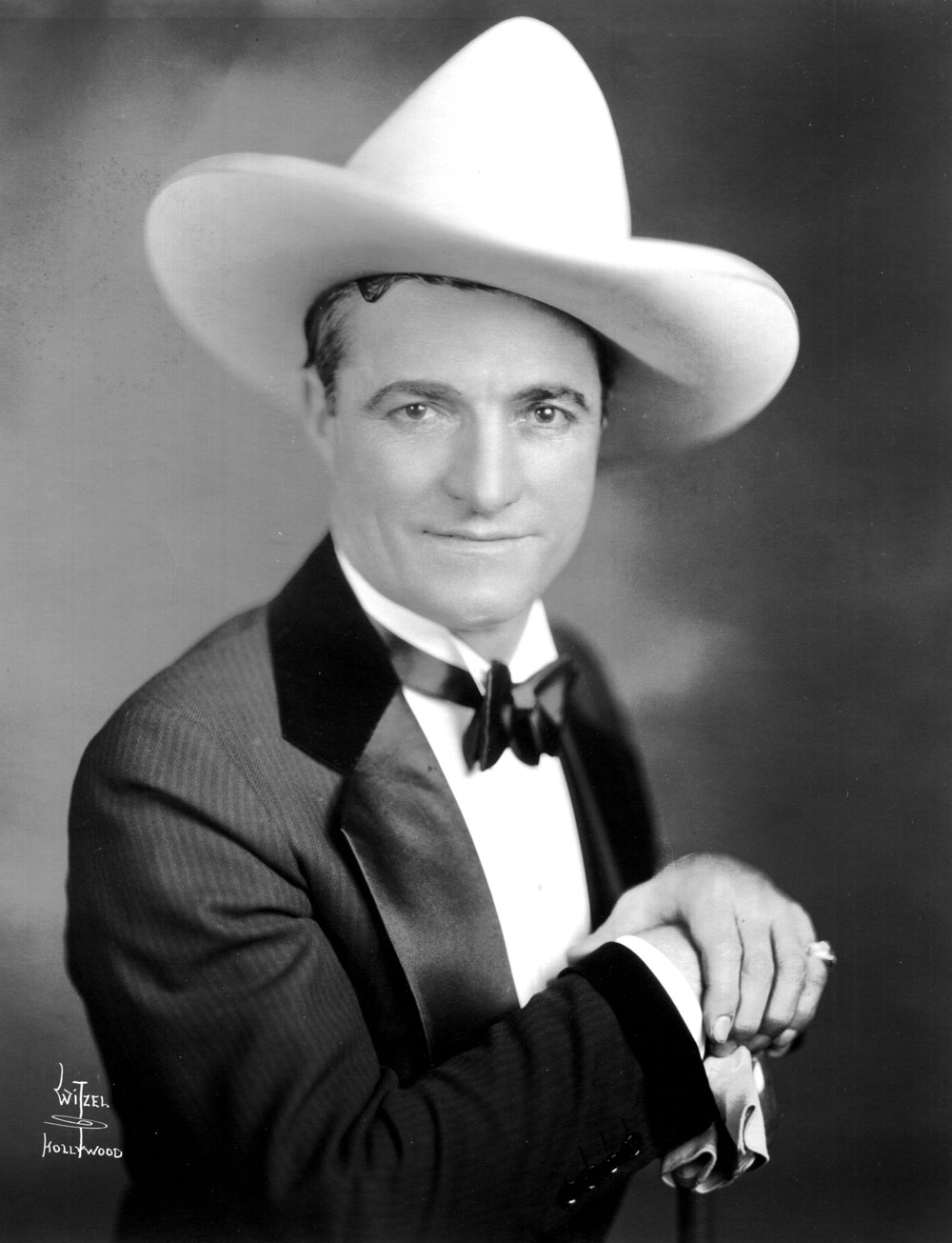The Encyclopedia of Oklahoma History and Culture
MIX, THOMAS EDWIN (1880–1940).
Silent-film star Thomas Edwin "Tom" Mix was the most flamboyant and popular of all the early movie cowboys. His colorful clothing and action-filled plots set a pattern for a generation of "B" Western heroes. He was a true "legend of the Old West," and his publicists created a heroic past for him, yet his real life had many Oklahoma connections.
Son of Edwin and Elizabeth Mix, Thomas Edwin Mix was born January 6, 1880, in Mix Run, Pennsylvania. His father, a stable master for a wealthy lumber merchant, taught Tom Mix to love horses. At eighteen Mix left home for the U.S. Army. In 1902 he married Grace Allin, went absent without official leave, and headed "out west" to Guthrie, Oklahoma Territory.
He found work as a bartender in the Blue Belle Saloon, wrangled horses, and even performed at the 1904 St. Louis Exposition as the drum major for the Oklahoma Cavalry Band. This exposure took him to the Miller Brothers 101 Ranch Wild West show near Ponca City, and he performed from 1905 to 1908 as a bronc buster for thirty-five dollars a week.
His first marriage was annulled and a second marriage to Jewell "Kitty" Perrine of Oklahoma City also was short lived. In 1908 he married Oklahoma "cowgirl" Olive Stokes, and they toured the Wild West show circuit together. His daughter, Ruth, was born in 1912 at Olive's family ranch near Dewey, Oklahoma. While Mix was staying with his in-laws, the mayor of Dewey, a family friend, appointed him "night marshal."
In 1909 Mix appeared in his first film when the Selig Polyscope Company hired Wild West show performers for horse scenes while filming near Dewey. A legitimate prize winner in the rodeo world, he joined with Guy Weadick in 1912 to organize the first Calgary Stampede. Mix signed with Fox Studios in 1917, but throughout his film career he continued to "hit the road" occasionally with a Wild West show or a circus.
Noted for his horsemanship, daring stunt work, and fancy wardrobe, Mix became the highest-paid actor in Hollywood by 1928, earning seventeen thousand dollars per week. He starred in such classics as the Lone Star Ranger (1923), Riders of the Purple Sage (1925), and Destry Rides Again (1932). Mix made more than three hundred films before he died in a car wreck near Tucson, Arizona, on October 12, 1940. At the beginning of the twenty-first century much of his custom clothing, saddles, and personal memorabilia was displayed at the Tom Mix Museum, an Oklahoma Historical Society property, in Dewey.
Bibliography
Robert S. Birchard, King Cowboy: Tom Mix and the Movies (Burbank, Calif.: Riverwood Press, 1993).
Ted Holland, B Western Actors Encyclopedia: Facts, Photos and Filmographies for More Than 250 Familiar Faces (Jefferson, N.C.: McFarland & Company, Inc., 1989).
Paul E. Mix, Tom Mix: A Heavily Illustrated Biography of the Western Star with a Filmography (Jefferson, N.C.: McFarland & Company, Inc., 1995).
Larry O'Dell, comp., Oklahoma @ the Movies (Oklahoma City: Oklahoma Historical Society, 2012).
Michael Wallis, The Real Wild West: The 101 Ranch and the Creation of the American West (New York: St. Martin's Press, 1999).
Citation
The following (as per The Chicago Manual of Style, 17th edition) is the preferred citation for articles:
Donald W. Reeves, “Mix, Thomas Edwin,” The Encyclopedia of Oklahoma History and Culture, https://www.okhistory.org/publications/enc/entry?entry=MI051.
Published January 15, 2010
© Oklahoma Historical Society


